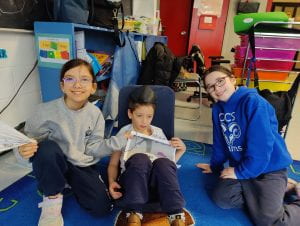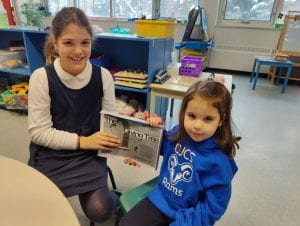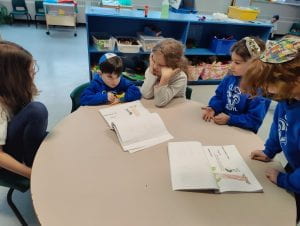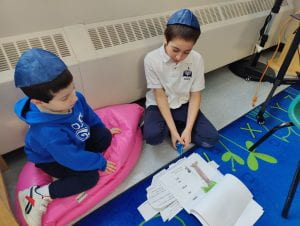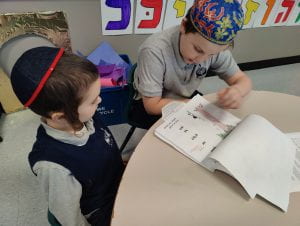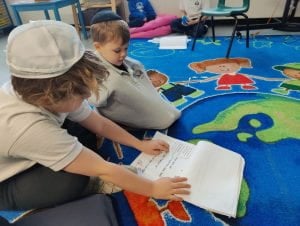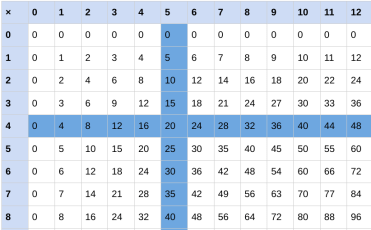
Hi Grade Four!
So we’re two weeks into an ongoing practice and understanding around multiplication skills. Without going into too much detail on the many sides of multiplication; there remains the ongoing debate between Memorizing or Meaning, Fact or Fluency, Strategy or Steps. In all cases, there is a very and even better argument for either side.
So let’s keep things factual here (pun maybe intended)
Whichever side you land off the fence, the following remain to be true for all accounts:
- multiplication is the foundation of math growth and continuous math learning
- multiplication paves the way for more complex and multi-step tasks
- multiplication provides one of the first connections of a spiral curriculum (area, repetitive addition, division properties etc.)
- multiplication (when memorized) provides and promotes confidence
- multiplication is a real-world life situation and skill
- multiplication is the base of future math learning: algebra, functions, equations, calculus, angles, trigonometry
Grade Four Ministry Expectation
The grade four learning expectation in the Ontario Curriculum is: (for math facts only)
B2.2 recall and demonstrate multiplication facts for 1 × 1 to 10 × 10, and related division facts
As we focus on this expectation as our base in Grade 4 this year at the OJCS, promotion and fostering further growth and understanding at independent and individualized learning continuums (Floor but No Ceiling) allows each student to continue to practice their multiplication understanding at their own levels. This means each student may be working on various levels of practice.
It is important that such an essential skill, such as multiplication, not be rushed, or merely brushed over; making it our longest math unit to date.
Fact vs Fluency
Here is where I tend to agree…to a certain point. Working in the Middle School over the past several years, it is always a struggle with multiplication facts, (and more importantly, lack of memorization and confidence in their usage) as students are required to know them, have them already memorized, and use them, before grade six and onward. I have witnessed students in the Middle School become really invested in how the multiplication works, and how to chunk larger numbers into various numbers, but freeze (give up, complain, shut down etc.) when a teacher says “no calculators.”
Over the past two years, I have taken a deeper dive into computational math in our Middle School, and allowing more space for “calculator free” math practice to take place and to be used on a regular basis. For me the pendulum can’t only swing to one side without fully completing and returning form the other. Finding balance is essential. When students are more familiar with their “facts” and understand the connection and correlation between strategies of these facts (fluency) students are much more successful in all areas of the math curriculum. Melissa Thompson, an OJCS teacher of grade five a few years ago, summed up “Memorizing Math Facts” pretty well in her blog post here.
Strategy
Focusing just on math facts, (not multi-digit multiplication, which is also a beginning grade four skill), is that memorization is not just the only way to remember. Knowing and using vocabulary, such as doubling, halfing, skip counting, multiples of tens (using zeros) and even finger tricks, can be a handy support (another fun pun) for students finding difficulty in “memorizing” all skills…and you know what…that’s okay.
This will also take form, during multi-digit multiplication, learning algorithms, area methods, and place value chunking or lattice methods to find the same product. This is where fluency takes the rein. Yes, memorization may make it “quicker” speed wise for a student to respond to an answer, but does that mean those faster students understand more? are smarter at math? Nope, not always. I have witnessed incredible math talk and understanding from students who just can’t grasp the memorization of facts. That doesn’t mean they didn’t try, or sit practising over and over and over again, but it does mean that they were allowed space and time to share their thinking in a different way. And that different way benefits everyone when it comes to fact fluency.
The theory is; the more often and familiar the student is with using math facts, the more it becomes a long term memory retrieval. Knowing what is fair for each learner is not always equal and this is exactly the point here. Gone are the days of everyone learning and memorizing their times tables in the same manner. Rather in with the days of multiple strategies to use multiplication and manipulate facts to achieve similar and same responses.
Therefore I stress to the students, each of you may be on your own Times Tables and multiplication journey. Another North Star “We Own our Own Learning.” Providing personalized homework practice, and in-class work, allows for each student to get what they need, where they are at, so they can continue to learn on their multiplication continuum.
So what does that mean for my child in Grade Four?
Good news! Multiplication practice is spiraled! This means your child will have more experiences with Times Tables and Multiplication Fluency over their next years of math learning.
The caveat is: math facts are only focused up until grade five in isolation. What happens then? Students focus more on the meaning, purpose, fluency, and connections of multiplication (distributive properties, complex area models, algebra, calculus, decimal and linear equations…and the list goes on.) Mentioned above- all of these concepts require knowledge and understanding of multiplication facts.
So now is the time to seriously think and tinker with those Times Tables!
We’re looking for growth, progress, an on-going continuum. We are focused on breaking down various tips and tricks for multiplication and also bringing in “memorization” of facts for easier retrieval.
This does not mean that your child needs to know his/her math facts fast. But it does mean, that they are becoming familiar enough with similar adjacent facts (ex. if I know 8 x 10, then I can find 8 x9 by one less group of 8.) have memorized most, or are using ones they know are building blocks and strategies for others. This all adds for either a smooth retrieval of the answer or a seamless understanding between how the times tables are connected (patterns, addition, place value etc.)
How to support at home?
No matter where your child lands within their multiplication journey and math fact fluency, there are ways in which you can support your child’s multiplication growth at home.
For Memorization:
- Timestables.com
- students practice using a 5-step progression and earn “awards” for each fact 0-12. Students have accounts made by me, so they can keep track of their progress and awards.
- Timestables charts
- Multiplication Math Fact Games
- Card games (such as “Spit” or “War” where one player lays a card down, and the other lays a card down and the first person to say the answer (product) keeps the cards
Fluency and Usage:
- Cost of items at a grocery story ( 4 cans of soup for $1, would mean 0.25 + 0.25 + 0.25 + 0.25 or 0.25 x4)
- We’re buying 6 jars of spaghetti sauce. Each jar costs approximately $4. How
much approximately will the 6 jars cost?
- There are 12 eggs in a carton and we have 4 people in our family. How many
cartons of eggs do we need to buy if each person wanted to eat 2 eggs for
breakfast everyday this week?
- There are 8 weeks until we leave for a trip! How can we calculate the number of
days using multiplication?
To sum up this post in a few words:
Practice, Practice, Practice.
Work toward Memorization and…
Strategize on your Strategies
I will be posting another multiplication blog post next week around De-Emphasizing Speed in Math, as we get into more focused multi-digit multiplication, and begin our connective unit on Division in the upcoming weeks.
Stay Tuned!
